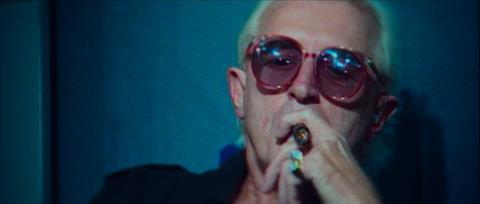“A decade on from his death, the story is no less shocking or confounding”

Jimmy Savile: A British Horror Story, Netflix
“A decade on from his death and the investigation into what turned out to be crimes extending over half a century and more than 50 children’s homes, schools and hospitals around Britain, the story is no less shocking or confounding. Somehow, the meticulous piecing together of the Savile phenomenon by the documentary makers only makes it more so.”
Lucy Mangan, The Guardian
“Jimmy Savile: A British Horror Story is, like all documentaries about this disgusting pervert, unpleasant to watch. This is not just because of the gruesome detail. It is also uncomfortable because, as we know, the nation lauded, hero-worshipped and indeed knighted a psychopathic paedophile. Seen together here, the number of times Savile openly advertised his degeneracy is astonishing.”
Carol Midgley, The Times
“It is difficult to imagine anyone of the Jim’ll Fix It generation watching for enjoyment. But A British Horror Story wasn’t made for those already au fait with the case. It is clearly intended for an international audience and for UK viewers too young to remember when Savile was a fixture on the airwaves. And, as an overview of the scandalous licence he was given to prey on vulnerable young people, it is horrifically thorough.”
Ed Power, The Telegraph
“It’s heavy on the archive clips of Savile himself, but A British Horror Story’s most effective moment comes in the form of really quite devastating testimony from one of his victims. In this moment, the documentary is restrained and effective, presenting the facts without editorialising, simply giving a victim the chance to speak. It’s a shame, then, that the documentary lapses elsewhere into the same kind of sensationalistic cliches that plague so much of Netflix’s true crime content.”
Louis Chilton, The Independent
The Great Home Transformation, Channel 4
“While the show is often a thinly veiled advert for its sponsors Ikea, it is, at least, refreshing to be liberated from the surrealistic metaverse that has come to define the modern renovation show, and instead focus more on the people who actually live in the houses. It is in moments of awkward condescension that we begin to see the lino peeling. Each host tries their best, but you slowly realise that there is only so much any show can do to make entertainment out of Britain’s miserable housing supply.”
Daniel Brooks, The Telegraph
“What a daft 18-wheeler waste of money. Nick Grimshaw and Emma Willis rolled up for a home makeover in a juggernaut the length of a football pitch — then left it parked on the kerb. Their ‘almighty truck of wonder’ was meant to be crammed with life-changing technology and enough soft furnishings to fill six removal vans. But its contents were barely used. Nick boasted about his team of domestic spies using GCHQ-style motion capture cameras and heat-mapping sensors, yet we never met them. The much-vaunted ‘heat maps’ turned out to be a couple of animations of a yellow stick figure leaving a blurred trail around a room.”
Christopher Stevens, Daily Mail
“This year’s contest has been well managed: at the quarter-final stage, only the designers with the biggest personalities and egos remain. That’s smart. We’re not watching to get inspiration for interior design — it’s tearful breakdowns and manic over-confidence that fans want to see. This show has that by the 18-wheeler lorry-load.”
Christopher Stevens, Daily Mail
The Ultimatum: Marry or Move On, Netflix
“The crack-meth blend is as potent as ever. Within 15 minutes, the lizard part of your brain is hopelessly invested and the higher functions can only pray for the accelerated heat death of the universe before the remaining nine and three quarter hours are up. It’s absolutely terrible. Morally, obviously, there is literally no justification for deliberately putting temptation in people’s way. Creatively, it’s bankrupt. Educationally, intellectually it’s … not. But, oh, the entertainment.”
Lucy Mangan, The Guardian
































No comments yet